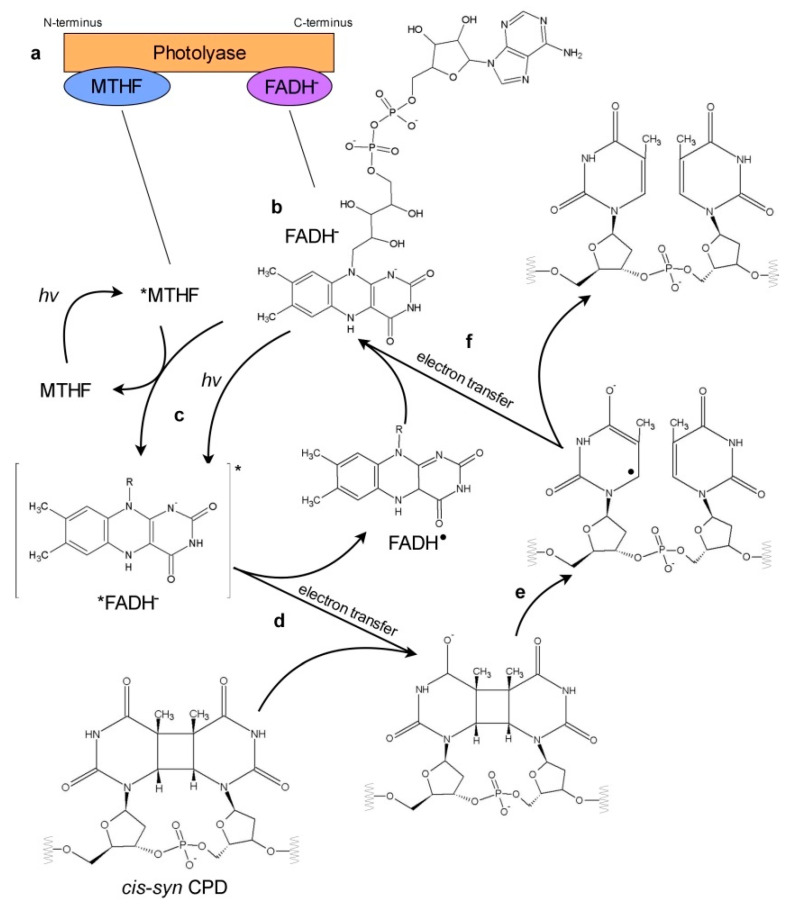Figure 3.
Schematic representation of electron transfer in photoreactivation. Known photolyases have two chromophores: non-covalently bound antenna chromophore (most commonly MTHF) near the N-terminus, and flavine adenine dinucleotide (FAD) near the C-terminus (a). FAD serves as a catalytic cofactor in the photoreactivation in the form of anionic hydroquinone (FADH−) (b). The other FAD states are represented in the simplified form with the group attached to the N-10 of the flavin moiety marked with R. The photorepair of CPD is shown as a representative model: (c) FADH− is excited directly upon absorption of blue/UV-A photon or by energy transfer from excited *MTHF antenna chromophore. (d) Electron is transferred from excited *FADH− onto a pyrimidine dimer. In this step, FADH• radical and CPD• radical are created. (e) Bonds between adjacent pyrimidines in a dimer are broken. Two separate rings are formed. (f) Electron is transferred back to FADH• radical and finally undamaged pyrimidines and FADH− are restored.

